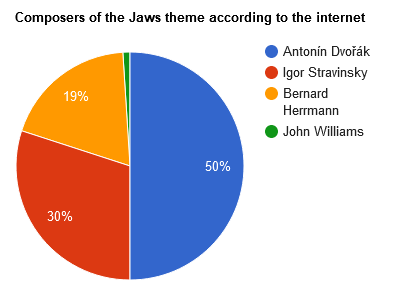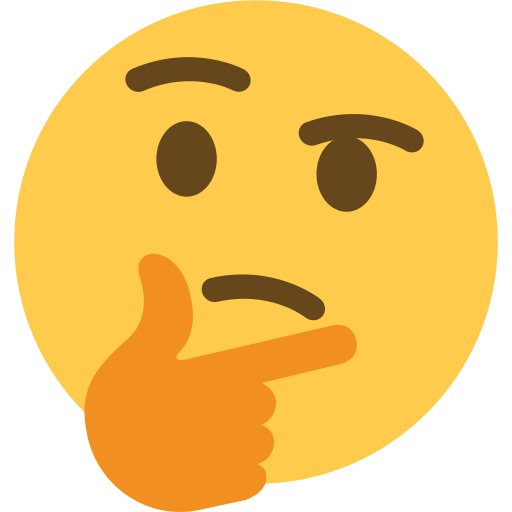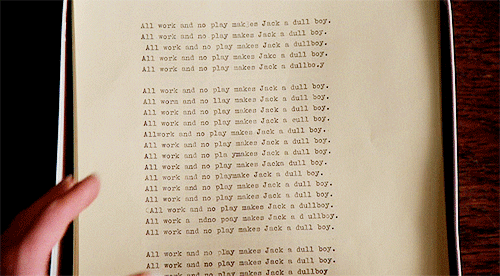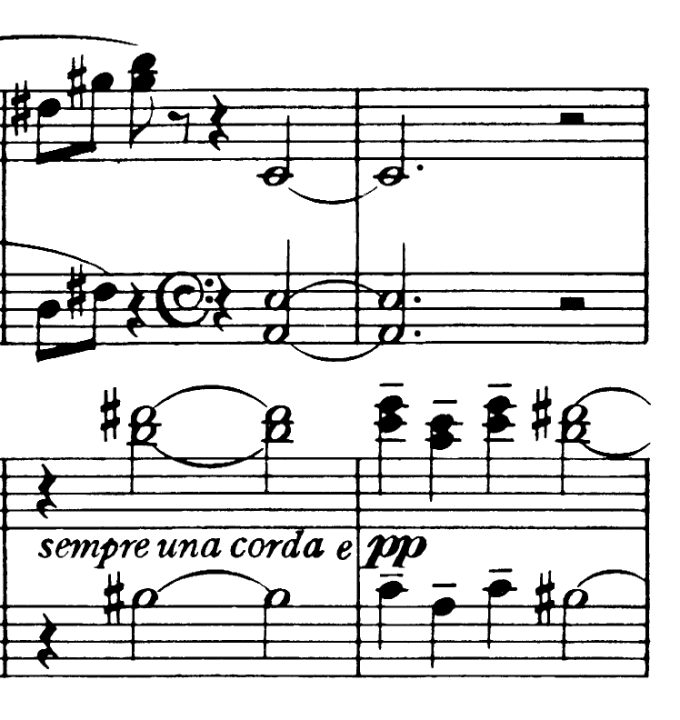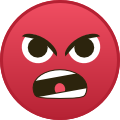-
Posts
2,411 -
Joined
-
Last visited
-
Days Won
20
Everything posted by Loert
-
Something I've been working on for the past couple of weeks:
-

The Definitive John Williams Plagiarism/Homage Thread
Loert replied to indy4's topic in JOHN WILLIAMS
-
Whatever it is, it's very quiet!
-
I think he has both in mind... I think JW is quite an instinctive composer, and he will basically do whatever is needed to write the music he wants.
-
If I were labelling these harmonies, I would just label bar 65-68 as "D Ionian". I think this, and the preceding section, are great examples of modal harmony. If we take the D Ionian part, I think we can divide it into 3 semantic parts. The first 2 parts are: - The underlying "bell" chord, containing the tones D E A B (in order of increasing pitch), i.e. all but the top stave in your reduction - The melody, containing the tones: A G F# E (in order of first appearance), in the top stave Now, if JW had left it like this, the melody would sound bare and lonely. So to make it sound more fanfare-ish, he "harmonizes" the melody by adding two more notes below each note in the main melody line. This is the 3rd part. But what tones does he use? He simply chooses tones from the mode he is in. Which mode should he pick? First, let's spell out the tones we already have: D E F# G A B Assuming this is a standard Western mode, we only have one degree missing: C. So we can have either C or C#. The first case would be Mixolydian, the 2nd would be Ionian, and JW decides to go with Ionian, as signified by the C# in bar 66. In a similar way, you can deduce that the preceding section is in B Mixolydian. That's all there is to it really. I think it is a fruitless task to try to account for every single note as part of some "chord", and to label it as such. Think of it this way: if you gave bar 64 to a guitarist, would you expect them to play F#7(sus4)/B followed by B6/9(sus4) followed by B(sus4) at that tempo? I think it is easier to understand, and closer to the spirit of the music, to tell them: "We are in B Mixolydian, and play around that". Here is one of few examples I can think of where thinking in terms of quick chord changes makes sense in JW's music (0:04-0:06):
-
Yep, I noticed he loves doing it in the brass too! I think it sounds great in the mid-register horns especially. I do think it comes from a big-band way of scoring, where if you have 4 horns (as JW usually does), then each horn plays a different note to avoid doubling any one pitch and thus avoiding un-even volume across the pitches. But this gives the nice side-effect of producing a 4-note harmony.
-
Ambitious. I like it. Just note though that the piano has the B included from the first bar, though I know what you are saying. I would just say this - JW likes to "colour" triads by adding 2nds, or major 7ths. It is important what @Falstaft says above, that these colour tones do not resolve. This is a kind of legacy from jazz, where you add tones to chords for purely coloristic purposes (though the impressionists, like Ravel and Debussy, also did this...and Wagner). Here, JW is adding the 2nd. In the Flying Theme from E.T., you will see that JW adds the major 7th to the horns to produce a similar effect. Why do these added notes work? I think it has something to do with the harmonic series. The first new tones in the harmonic series are the perfect 5th and the major 3rd (this is the basis of the major triad). But now let's take the 5th. What are the first new tones in the harmonic series of the 5th, in terms of the tonic? Well, they are the 2nd, and the 7th. For example: if the tonic is C, the 5th above C is G. The harmonic series of G will yield D and B as the first new tones. These are the 2nd and 7th of the tonic (C) respectively. This is why these two intervals work well as colour tones. So basically, JW is making the music "shine" by emphasising these "colour tones". When you say intervals like "2nd", you need to base it on the root of the chord. A "standard minor iv chord with an added 2nd" would therefore be A-D-E-F, not A-B-D-F. Here, the "B" is actually a 6th. But anyway, this chord is definitely a "ii half-diminished seventh, third inversion", because JW is most definitely hinting at a ii -> V -> I progression here. Therefore the "B" definitely has a function as the ii, and is not merely an added 6th note. (An example of an unambiguous minor chord with an added 6th would be in the James Bond theme. The third chord to be precise: see this page for the actual chord symbols. Note that there is no hint of a ii -> V -> I progression here.) This "half-diminished"-sounding chord may sound familiar to you from JW's love themes. These pieces all begin with the same two chords: Leia's Theme Han and Leia Marion's Theme Namely, I -> iiø7 OR I -> iv(add6). This is where it gets finicky and why I don't like labelling music by someone like JW with chord symbols, because it gets ambiguous. I think that in all these pieces, a case can be made for either iiø7 or iv(add6) as the second chord. I would probably lean towards the iv(add6) on the whole. But in the Hook example, the hint of the ii -> V -> I progression is strong enough to justify calling it a half-diminished chord, IMO.
-

The Definitive John Williams Plagiarism/Homage Thread
Loert replied to indy4's topic in JOHN WILLIAMS
I thought "Thatsh" was an acronym for something, lol -

The Definitive John Williams Plagiarism/Homage Thread
Loert replied to indy4's topic in JOHN WILLIAMS
Ah! I see now. Yes, there is some similarity... -

The Definitive John Williams Plagiarism/Homage Thread
Loert replied to indy4's topic in JOHN WILLIAMS
Where is the blasphemy? I've known this piece for a while but never associated it with JW -
However many times I listen to this it always gives me chills (in a good way):
-
Whenever I listen to this I feel like I've just entered into a dungeon in an Elder Scrolls game...
-
I think this is one of those instances where "labelling" the melody line with chord symbols based on the bass line may obscure what's happening. I think Williams knew that he wanted a climactic, "Americana" instance of the last three notes of the Mission Theme, and he decided that there was going to be some kind of extended harmony involved. And I think all that Williams did was move vertically downwards from the melody line, building up the harmony that way. For example, for the first note, we could harmonize it like Bbmaj7 with the A at the top...because we like maj7s, and it keeps us in the right key (as opposed to, say, Dmaj7, with the A on top, which would take us out of the key). But Bbmaj7 doesn't sound rich enough. So we can keep going down, first to G (Gm9), then Eb (Ebmaj#11). We could still have gone down to C (Cm13), but JW didn't. The next note might have been built downwards the same way. JW decided to stop at Ab this time, thus giving us a 13th chord, "richer" than the preceding 11th. So we get a buildup in harmonic richness before arriving at the tonic. But here's the thing with the final chord: we could have gone down to F, in which case the bass would in fact be the dominant tone. And if you add the extra F at the bottom, it really doesn't sound that different from the final result (far less noticeable than if you had changed the top note, for instance). So, in fact, it is a kind of v -> I cadence, only you can say that JW left out the bass note, thus replacing the v with a chord of somewhat air-ier, more ambiguous quality. Anyway, this is how I would think about that passage in particular. Using chord symbols makes the most sense IMO when you have a meaningful bass line, but in this particular case I would argue that there is no "bass line" as such.
-
Here's me playing my own arrangement of Helena's Theme for piano: Note: if you have perfect pitch, or an excellent musical memory, then this arrangement may drive you crazy as I mix and match elements from the standard version and the violin version (including some key changes). Though hopefully the final result is coherent enough.
-
Remember that John Williams used to be a jazz musician. (Read up on jazz harmony, I am sure it will blow your mind ) P.S. Welcome to the forums! EDIT: I should also say that the Neptune movement from Holst's "The Planets" uses harmony in a very similar way, and that was likely an inspiration for the specific segment you mentioned. For example, measure 3 here: That's a G# minor chord (piano 2) over an A minor chord (piano 1), which has a very similar relationship to the C Major over Db Major chord in your example. In the Holst example, one can explain the "clash" by saying that the G# minor chord is acting as a suspension. But what someone like John Williams would do is take that clash and make it a sonority of its own (and indeed, Holst does the same thing later in the piece).
-

Official JWFan mock ups and fan-made recordings thread!
Loert replied to Jay's topic in General Discussion
Very nice! One overall, musical comment I would make: in the main trumpet line (from 0:12 onwards), the short notes preceding the long notes often sound as loud, if not louder, than the long notes. Sometimes I also feel that said short notes come in a bit too early. Both of these obscure the beat, and in a march, well...the beat is very important. Sound wise it's excellent, though! -
-

Der Ring des Nibelungen (Richard Wagner)
Loert replied to Jurassic Shark's topic in General Discussion
I think such lists are useful as a way for displaying the richness of the thematic material, though I agree that some academics do get a little...excited with their labellings. Ultimately, Der Ring as a work consists of just two things: music, and a libretto. Wagner did not name his own themes (or perhaps he named one or two), in fact he discouraged such namings. So it's different from film music, where you have a "Helena's Theme", "Rey's Theme" etc. With Wagner, coming up with such names is basically speculation on the audience's part. This is one of the reasons why I love Der Ring, because there's so much left open to interpretation. P.S. I need Lavignac's table of leitmotifs as a framed poster, immediately.- 82 replies
-
- Richard Wagner
- Der Ring des Nibelungen
- (and 4 more)
-

Der Ring des Nibelungen (Richard Wagner)
Loert replied to Jurassic Shark's topic in General Discussion
Here is quite a detailed written interpretation of the motifs in the Ring and their relations: https://www.wagnerheim.com/page/1011- 82 replies
-
- Richard Wagner
- Der Ring des Nibelungen
- (and 4 more)
-

Der Ring des Nibelungen (Richard Wagner)
Loert replied to Jurassic Shark's topic in General Discussion
The only summary you will ever need: "The Ring is a magnificent work, supposing you can make any sense out of it"- 82 replies
-
- Richard Wagner
- Der Ring des Nibelungen
- (and 4 more)
-

NY Times Article: "How to Write Music for Rolling Boulders"
Loert replied to ConorPower's topic in JOHN WILLIAMS
Fantastic article! What I particularly love about it is how you draw the lens towards underscore/action music specifically. Usually when Williams is mentioned in articles, it's almost always in reference to his pretty themes, his use of leitmotif etc...but not much on the actual underscore per se. But for me, the underscore can be just as rewarding to listen to, if not more. So it's great to see this "subgenre" getting some love, no less in a newspaper as high profile as the NYT. -
Does anyone know which piece of Sibelius' music he's referencing at 5:42? All I know is it reminds me of this part from ANH (2:53):
-

Indiana Jones and the Dial of Destiny (Score in the film) - SPOILERS ALLOWED!
Loert replied to Jay's topic in JOHN WILLIAMS
When I saw TFA I stayed behind for the credits, as did another group of kids. But they were clearly just waiting for a post-credits scene, and they kept talking loudly over the music. It was doubly annoying since I had specifically avoided listening to the score on its own before the viewing, as I wanted to experience it for the first time in the cinema. Haven't made that mistake since!



